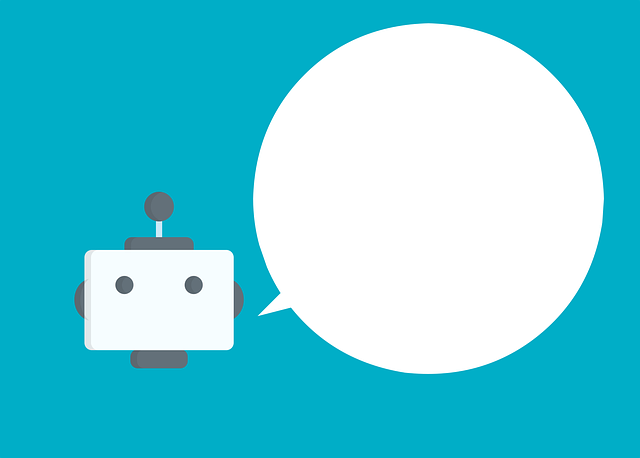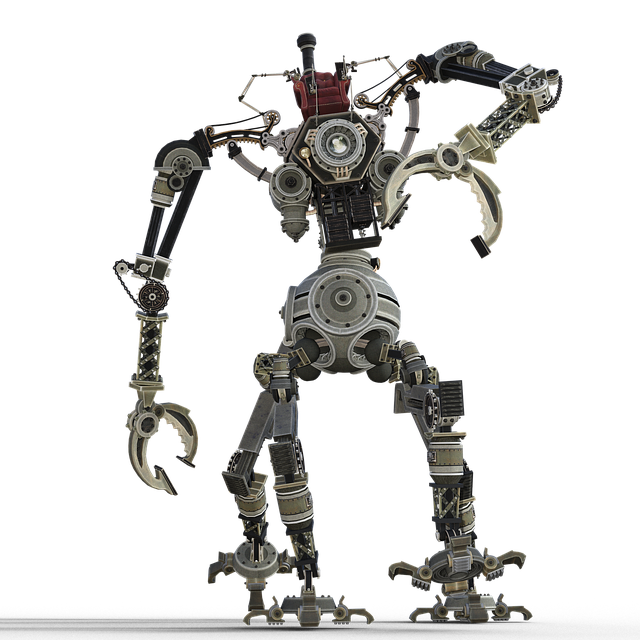Chatbot AI development involves intricate natural language processing (NLP) and machine learning (ML) techniques to enable machines to engage in human-like dialogues. These systems parse user inputs, determine intent, and generate relevant responses using sophisticated algorithms, which are refined with large datasets. Advanced chatbots perform sentiment analysis, maintain context, and offer personalized interactions through models like RNNs or transformers, integrating with databases for real-time assistance in tasks from scheduling to FAQs. The field of chatbot AI is evolving rapidly, with a focus on user-centric design to ensure coherent, context-aware conversations that enhance user satisfaction and engagement.
The choice of technology stack—including programming languages like Python with NLP libraries such as NLTK or spaCy, and frameworks like Node.js for web integration—is crucial for chatbot performance and scalability. Cloud platforms like AWS, Google Cloud, and Microsoft Azure provide robust infrastructure, APIs for AI components, and adherence to data privacy standards. Chatbots are trained with both supervised and unsupervised learning, employing neural networks and transformers to craft nuanced responses and refine their understanding over time through continuous learning. Their integration into business operations is key for real-world application, demanding careful platform selection, initial testing, ongoing monitoring, and iterative updates based on user feedback to remain effective and adaptive to changing needs and AI advancements.
Explore the dynamic landscape of chatbot AI with our comprehensive guide. From laying the foundational understanding of what chatbot AI entails, this article navigates through designing compelling conversational flows, selecting an optimal technology stack, and employing sophisticated machine learning techniques for training your bot. Delve into the practical aspects of deploying, testing, and maintaining your chatbot in diverse real-world environments to ensure seamless user interaction and long-term success. Whether you’re a novice or an experienced developer, this article equips you with the insights necessary to create an effective chatbot AI solution.
- Understanding Chatbot AI: The Basics and Beyond
- Designing Conversational Flows for Effective User Interaction
- Selecting the Right Technology Stack for Your Chatbot Project
- Training Your Chatbot with Advanced Machine Learning Techniques
- Deploying, Testing, and Maintaining Your Chatbot in a Real-World Environment
Understanding Chatbot AI: The Basics and Beyond

Embarking on the creation of a chatbot AI involves a multifaceted approach that spans from grasping the foundational concepts to exploring advanced functionalities. At its core, chatbot AI is a blend of natural language processing (NLP) and machine learning (ML), which enables the system to understand, interpret, and respond to human language in a manner that feels both natural and helpful. The basics of chatbot AI hinge on understanding the mechanics of conversational interfaces; this includes parsing user input, recognizing intent, and generating appropriate responses. These interactions are facilitated through algorithms that can be trained using large datasets to improve accuracy over time.
Beyond the entry-level mechanics, chatbot AI encompasses a range of complex functionalities, such as sentiment analysis, contextual memory, and personalized user experiences. Advanced chatbots leverage deep learning models like recurrent neural networks (RNNs) or transformers to understand the subtleties of language and maintain coherent context within conversations. They can also integrate with databases and external services to fetch real-time data, enabling them to perform tasks such as booking appointments, answering FAQs, or even assisting users in complex decision-making processes. As the field progresses, chatbot AI continues to push the boundaries of what’s possible in human-computer interaction, making it an exciting and ever-evolving domain for both developers and users alike.
Designing Conversational Flows for Effective User Interaction

When designing conversational flows for a chatbot AI, it’s crucial to consider the user’s perspective and intended journey throughout their interaction with the bot. Effective user interaction hinges on the chatbot’s ability to understand user intent and deliver relevant responses swiftly and accurately. The flow should be intuitive, guiding users through a series of questions or prompts that are logical and lead naturally to the desired outcome. This requires meticulous planning and testing; each step in the conversation should build upon the previous one, ensuring coherence and context retention. Utilizing chatbot AI’s capabilities, designers can craft responses that mimic human-like understanding and adaptability, allowing for a seamless dialogue experience. By implementing best practices such as clear prompts, maintaining stateful context across interactions, and employing machine learning to refine conversational patterns, chatbots can achieve high levels of user satisfaction and engagement. It’s the blend of anticipating user needs with the AI’s sophisticated response mechanisms that makes for an effective conversational flow, ultimately leading to a successful user interaction.
Selecting the Right Technology Stack for Your Chatbot Project

When embarking on a chatbot project, selecting the appropriate technology stack is paramount for ensuring the chatbot AI’s effectiveness and scalability. The choice of programming languages, frameworks, and platforms should align with the bot’s intended functionality, complexity, and audience. For instance, Python is often favored due to its simplicity and extensive libraries like NLTK or spaCy that aid in natural language processing (NLP). These tools enable the chatbot to understand and process user input more effectively. Additionally, JavaScript, particularly with frameworks like Node.js, can be a strong choice for building interactive and responsive chatbots, especially when integrating them into web applications.
Moreover, cloud services such as AWS, Google Cloud, or Microsoft Azure offer robust infrastructure to deploy chatbot AI, ensuring high availability, security, and the ability to scale resources dynamically. These platforms provide APIs that facilitate tasks like speech recognition, sentiment analysis, and machine learning model hosting, which are integral to creating an intelligent and adaptive chatbot. When integrating these services, consider the data privacy requirements and compliance standards necessary for your user base, as this will influence the architecture of your chatbot AI’s backend. By carefully selecting each component of the technology stack, from the programming languages to the cloud infrastructure, developers can construct a solid foundation for their chatbot AI that is both functional and adaptable to future advancements in chatbot AI technologies.
Training Your Chatbot with Advanced Machine Learning Techniques

Integrating advanced machine learning techniques into chatbot AI development significantly enhances the bot’s ability to understand and respond appropriately to user queries. The training phase is pivotal, involving a combination of supervised and unsupervised learning methods to process vast datasets. By employing neural networks, particularly recurrent neural networks (RNNs) and transformers like GPT (Generative Pre-trained Transformer), chatbots can generate coherent and contextually relevant responses. These AI models are trained on diverse linguistic data sources to ensure the chatbot can handle a wide array of conversational scenarios effectively. Moreover, fine-tuning these models with specific domain data can tailor the chatbot’s capabilities to suit particular industries or use cases, thereby improving accuracy and user satisfaction. As the bot interacts with real users, continuous learning algorithms can be applied to refine its performance further, adapting to new patterns in language use and expanding its conversational repertoire over time.
Deploying, Testing, and Maintaining Your Chatbot in a Real-World Environment

In deploying your chatbot AI in a real-world environment, it’s crucial to select an appropriate platform that supports the integration of your chatbot with existing systems and communication channels. This ensures seamless interaction with end-users and aligns with business operations. Once deployed, the chatbot should be rigorously tested across various scenarios to validate its functionality. Real-world testing is pivotal for identifying potential issues such as misinterpretations of user input or unexpected interactions that may not have been accounted for during the design phase. This step is instrumental in refining the chatbot’s responses and improving its accuracy, thereby enhancing user satisfaction and effectiveness.
After successful deployment and testing, maintaining your chatbot AI becomes a priority to ensure long-term viability and utility. Continuous monitoring of interactions helps identify areas for improvement, allowing for iterative enhancements to the chatbot’s algorithms and knowledge base. User feedback is invaluable during this phase; it can be integrated to refine the chatbot’s conversational abilities and expand its capabilities. Regular updates and maintenance are essential to adapt the chatbot to evolving user needs and technological advancements in AI, ensuring that it remains a reliable and effective tool for your organization’s customer engagement strategies.
In concluding our exploration of chatbot AI, it’s clear that the creation of an effective chatbot involves a multifaceted approach. From grasping the fundamentals of conversational AI to meticulously designing user interactions, selecting a suitable technology stack, and employing sophisticated machine learning methods for training, each step is crucial in developing a chatbot that can serve its intended purpose effectively. Deploying your chatbot into various environments and rigorously testing it ensures that your AI can handle real-world scenarios with finesse. By following the outlined strategies, you can create a chatbot AI that not only engages users but also enhances their experience through seamless interactions. Remember to continuously refine and update your chatbot to adapt to new challenges and user needs, ensuring its relevance and utility in the dynamic landscape of AI technology.
